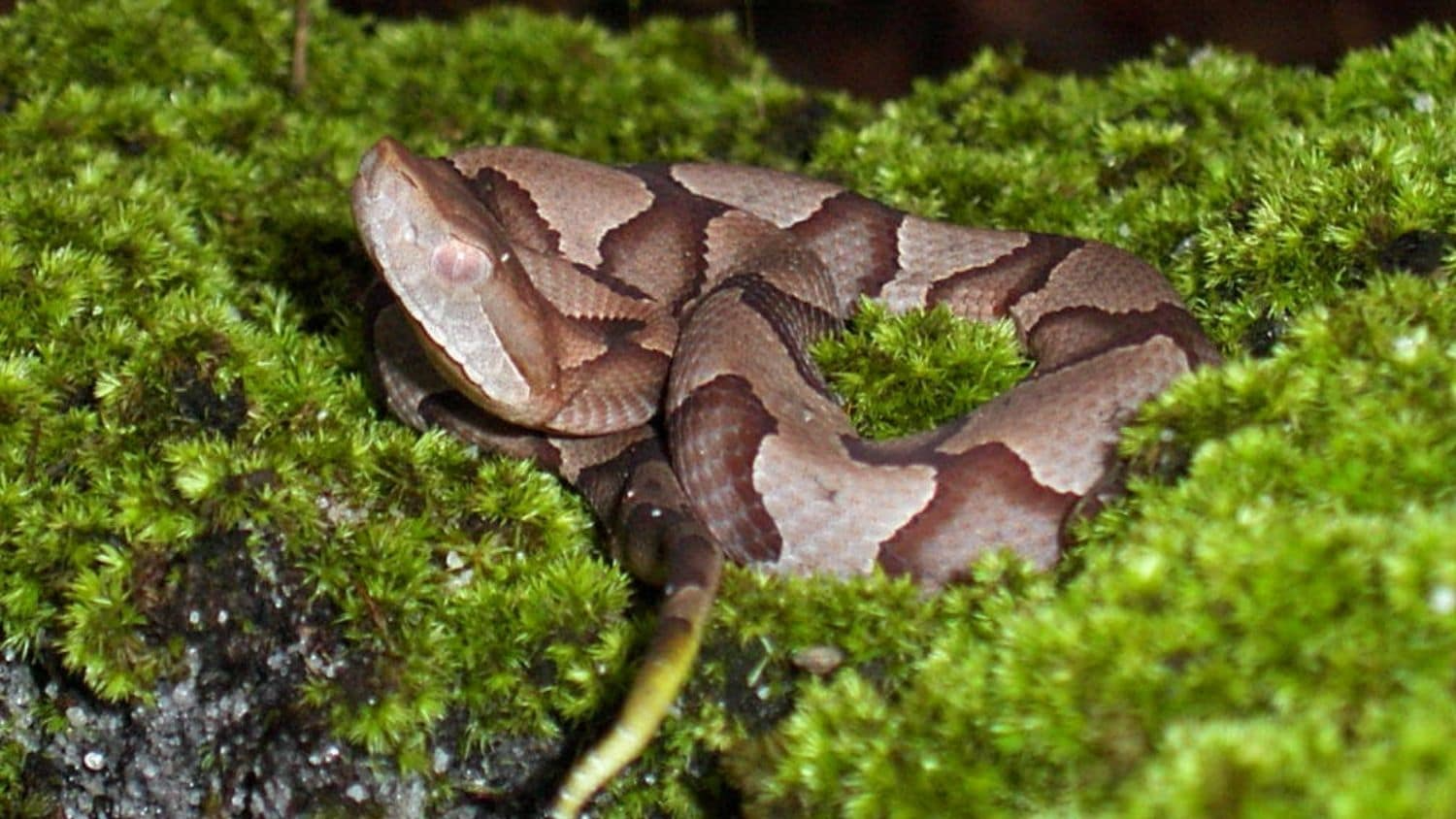Subconscious Bias Drives Negative Attitudes Toward Snakes
Snakes rank among Americans’ top animal phobias, and are among the most disliked animals globally.

Baby copperhead snake. Credit: Peter Pattavina, U.S. Fish and Wildlife Service.
Snakes rank among Americans’ top animal phobias, and are among the most disliked animals globally. A new study from North Carolina State University finds that the dislike of snakes is subconscious and, to some extent, learned.
“Snakes are important,” said the study’s first author Audrey Vaughn, a former graduate student at NC State. “They serve as both important predators and sources of prey for other wildlife. They can also serve as important ecological indicators. This disdain that people have for them is something that impacts our ability to make sure they are well conserved. That in and of itself is a reason to better understand these attitudes and to try to figure out what can be done about them.”
In the study, researchers used the implicit association test (IAT) to understand the attitudes of 175 people, including adults and children, toward snakes versus songbirds. They compared results for parents aged 21 to 76 years, and children 7 to 17 years, and attitudes between households. They used a software system developed at NC State to deliver the test, which has been used to test people for subconscious gender and racial biases.
“Studies can be divided into two types: explicit studies, which often use surveys and allow people to think and have a rationale for why they feel a certain way, and the other is implicit, which is subconscious,” said study co-author Nils Peterson, a professor in NC State’s Fisheries, Wildlife and Conservation Biology program. “The test is somewhat of an imperfect tool in large part because implicit attitudes aren’t great predictors of what people actually do.”
In the test, researchers measured how long it took participants to sort pictures and words into categories of “snake or songbird” and also “positive or negative words.” For example, the researchers compared the time it took respondents to sort pictures and words with the paired headings “snake and good” and “songbird and bad” compared with “snake and bad,” and “songbird and good.”
“The test assumes that you’re going to respond faster to previously built associations compared with ones that go against what you subconsciously think,” said William Casola, a graduate student at NC State. “For example, if you pair the positive words with snakes, and you respond slower, that’s because that positive association is not built into your subconscious.”
Overall, participants had a negative bias average score of -0.23, indicating people on average responded faster when snakes were linked with negative words. All of the individual demographic groups they measured also had a negative average score against snakes, with parents exhibiting more bias against snakes than children. Sixty-eight percent of respondents had a negative implicit bias against snakes, researchers reported.
Since parents’ average score – at -0.30 – was more negative than the average for children – at -0.16 – researchers said that provides some evidence that socialization and learning play a role in people’s animosity toward snakes.
They also found that parents and children within the same household were a little bit more likely than random people in two or more households to have similar scores, adding some support to the theory that at least part of people’s aversion to snakes is learned. However, the impact of household membership was small.
“Variables like generational differences, household, as well as sex, race and ethnicity, accounted for very little variance within our model,” Vaughn said. “This suggests that while there may be some evidence of socialization or learning, it might better be explained by innate attitudes.”
Researchers said there’s a need to better understand implicit biases toward snakes and other potentially dangerous or commonly feared animals.
“One of the important insights is: When you’re dealing with snake conservation, you have a different baseline than you do for other species because of these subconscious negative attitudes,” Peterson said. “If you’re not aware of that different baseline, you can stumble. You might make different decisions if you’re aware of your subconscious, negative attitudes.”
Raising awareness, they said, is one step toward a solution.
“Recognizing and naming these implicit attitudes toward certain species that are commonly killed or don’t receive funding for conservation is important,” Vaughn said.
Publication: Audrey K. Vaughn, et al., Using the Implicit Association Test to Evaluate Subconscious Attitudes Toward Snakes, Conservation Biology
(2022). DOI: 10.1080/08927936.2021.1986261.
Original Story Source: North Carolina State University

 Alerts Sign-up
Alerts Sign-up